Top Rankings
Nashua K-12 Schools School District ranks among the top 20% of public school district in Montana for:
Category
Attribute
Diversity
Most diverse schools (Top 1%)
Student Attention
Lowest student:teacher ratio (Top 1%)
For the 2025 school year, there is 1 public preschool serving 43 students in Nashua K-12 Schools School District. This district's average pre testing ranking is 2/10, which is in the bottom 50% of public pre schools in Montana.
Public Preschool in Nashua K-12 School School District have an average math proficiency score of 20% (versus the Montana public pre school average of 41%), and reading proficiency score of 20% (versus the 47% statewide average).
Minority enrollment is 33% of the student body (majority American Indian), which is more than the Montana public preschool average of 23% (majority American Indian).
Overview
This School District
This State (MT)
# Schools
3 Schools
395 Schools
# Students
101 Students
65,251 Students
# Teachers
14 Teachers
4,856 Teachers
Student : Teacher Ratio
7:1
7:1
District Rank
Nashua K-12 Schools School District, which is ranked within the bottom 50% of all 347 school districts in Montana (based off of combined math and reading proficiency testing data) for the 2021-2022 school year.
The school district's graduation rate of 50% has stayed relatively flat over five school years.
Overall District Rank
#236 out of 350 school districts
(Bottom 50%)
(Bottom 50%)
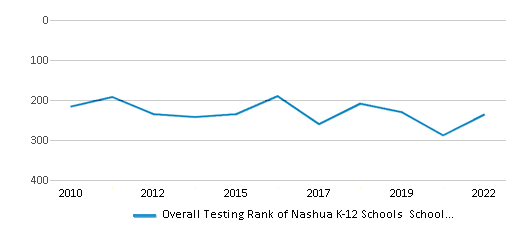
Math Test Scores (% Proficient)
20-29%
35%
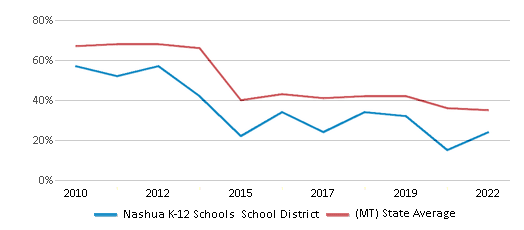
Reading/Language Arts Test Scores (% Proficient)
40-49%
46%
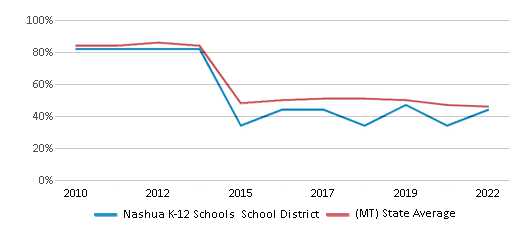
Science Test Scores (% Proficient)
40-59%
37%

Graduation Rate
≥50%
86%
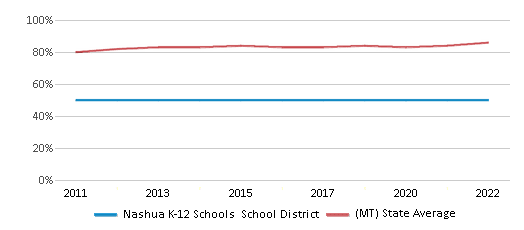
Students by Ethnicity:
Diversity Score
0.56
0.40
# American Indian Students
21 Students
6,505 Students
% American Indian Students
21%
10%
# Asian Students
n/a
357 Students
% Asian Students
n/a
1%
# Hispanic Students
8 Students
4,243 Students
% Hispanic Students
8%
6%
# Black Students
n/a
459 Students
% Black Students
n/a
1%
# White Students
63 Students
50,046 Students
% White Students
62%
77%
# Hawaiian Students
n/a
111 Students
% Hawaiian Students
n/a
n/a
# Two or more races Students
9 Students
3,530 Students
% of Two or more races Students
9%
5%
Students by Grade:
# Students in PK Grade:
-
1,059
# Students in K Grade:
4
11,907
# Students in 1st Grade:
6
10,512
# Students in 2nd Grade:
11
10,623
# Students in 3rd Grade:
10
9,606
# Students in 4th Grade:
7
9,406
# Students in 5th Grade:
5
8,220
# Students in 6th Grade:
10
3,620
# Students in 7th Grade:
7
158
# Students in 8th Grade:
10
140
# Students in 9th Grade:
5
-
# Students in 10th Grade:
11
-
# Students in 11th Grade:
8
-
# Students in 12th Grade:
7
-
# Ungraded Students:
-
-
District Revenue and Spending
The revenue/student of $20,396 is higher than the state median of $15,263. The school district revenue/student has grown by 8% over four school years.
The school district's spending/student of $19,901 is higher than the state median of $15,352. The school district spending/student has grown by 8% over four school years.
Total Revenue
$2 MM
$2,285 MM
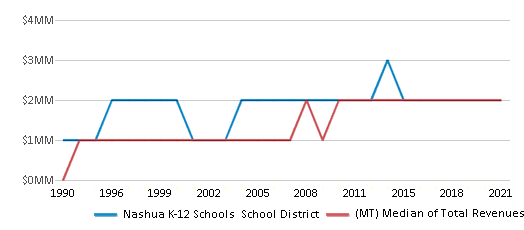
Spending
$2 MM
$2,298 MM
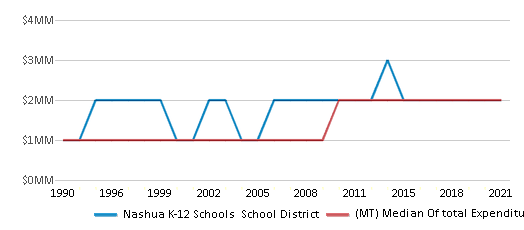
Revenue / Student
$20,396
$15,263
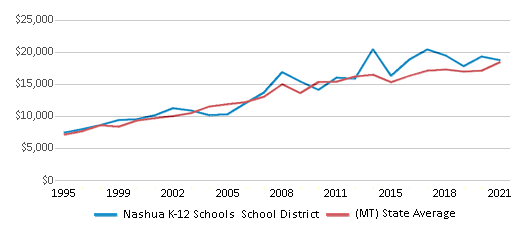
Spending / Student
$19,901
$15,352
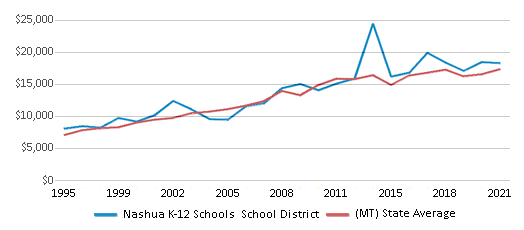
Best Nashua K-12 Schools School District Public Preschools (2025)
School
(Math and Reading Proficiency)
(Math and Reading Proficiency)
Location
Grades
Students
Rank: #11.
Nashua School
(Math: ≤20% | Reading: ≤20%)
Rank:
Rank:
2/
Bottom 50%10
222 Mabel
Nashua, MT 59248
(406) 746-3411
Nashua, MT 59248
(406) 746-3411
Grades: PK-5
| 43 students
Recent Articles

What Is A Charter School?
Explore the world of charter schools in this comprehensive guide. Learn about their history, how they operate, and the pros and cons of this educational innovation. Discover key facts about charter schools, including admission policies, demographics, and funding, as well as what to look for when considering a charter school for your child.

10 Reasons Why High School Sports Benefit Students
Discover the 10 compelling reasons why high school sports are beneficial for students. This comprehensive article explores how athletics enhance academic performance, foster personal growth, and develop crucial life skills. From improved fitness and time management to leadership development and community representation, learn why participating in high school sports can be a game-changer for students' overall success and well-being.

February 05, 2025
Understanding the U.S. Department of Education: Structure, Impact, and EvolutionWe explore how the Department of Education shapes American education, from its cabinet-level leadership to its impact on millions of students, written for general audiences seeking clarity on this vital institution.





